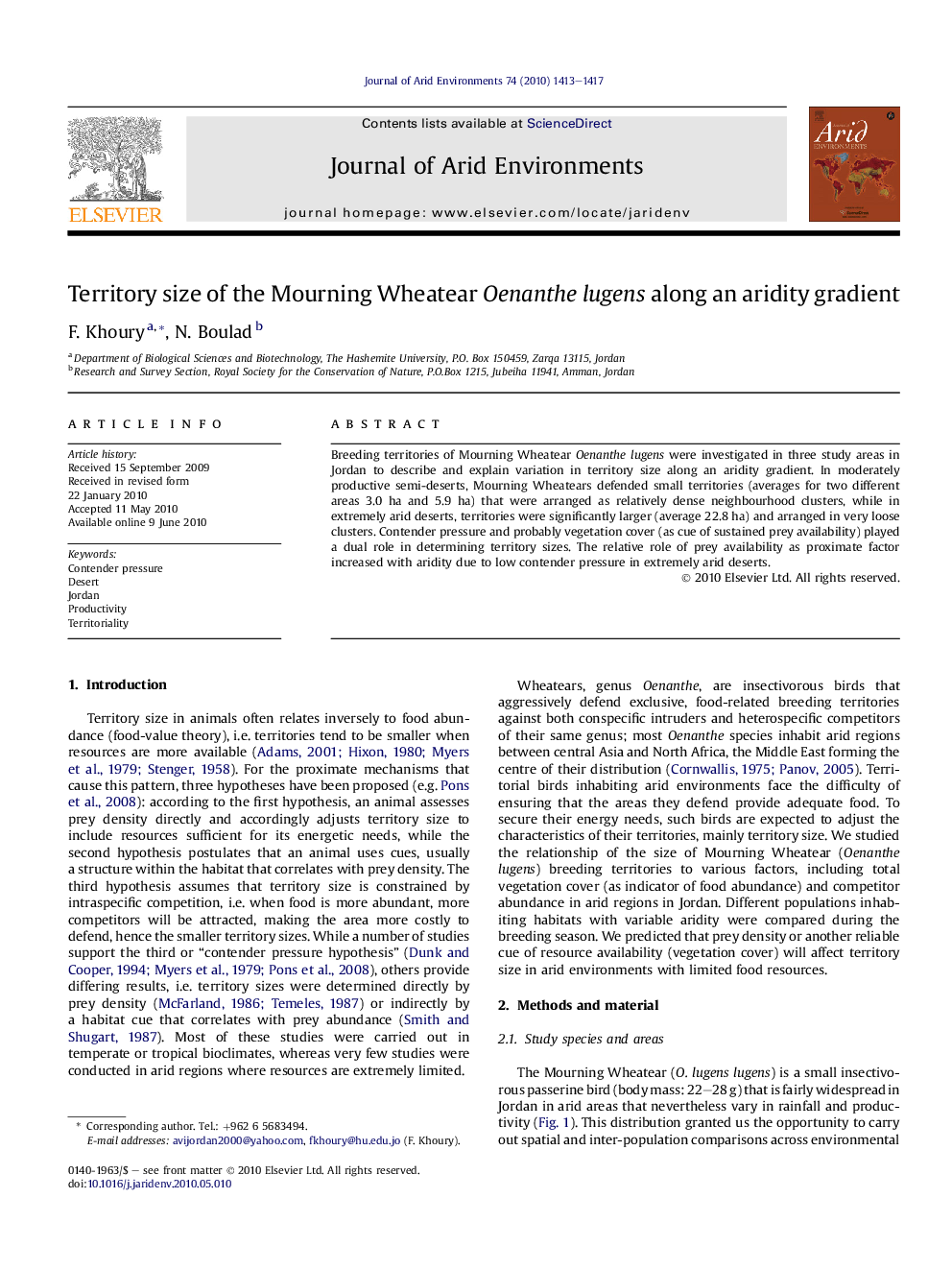| Article ID | Journal | Published Year | Pages | File Type |
|---|---|---|---|---|
| 4393698 | Journal of Arid Environments | 2010 | 5 Pages |
Breeding territories of Mourning Wheatear Oenanthe lugens were investigated in three study areas in Jordan to describe and explain variation in territory size along an aridity gradient. In moderately productive semi-deserts, Mourning Wheatears defended small territories (averages for two different areas 3.0 ha and 5.9 ha) that were arranged as relatively dense neighbourhood clusters, while in extremely arid deserts, territories were significantly larger (average 22.8 ha) and arranged in very loose clusters. Contender pressure and probably vegetation cover (as cue of sustained prey availability) played a dual role in determining territory sizes. The relative role of prey availability as proximate factor increased with aridity due to low contender pressure in extremely arid deserts.
